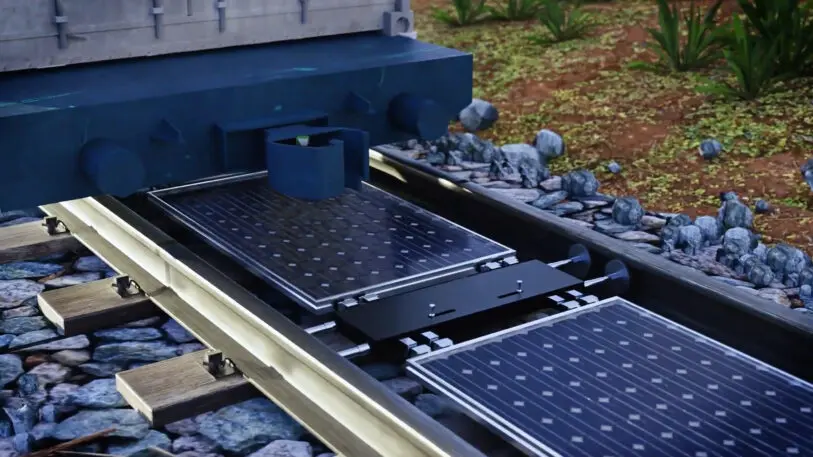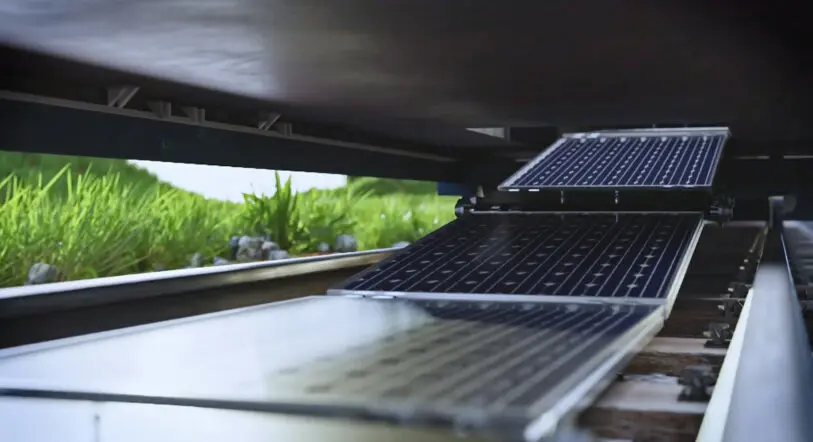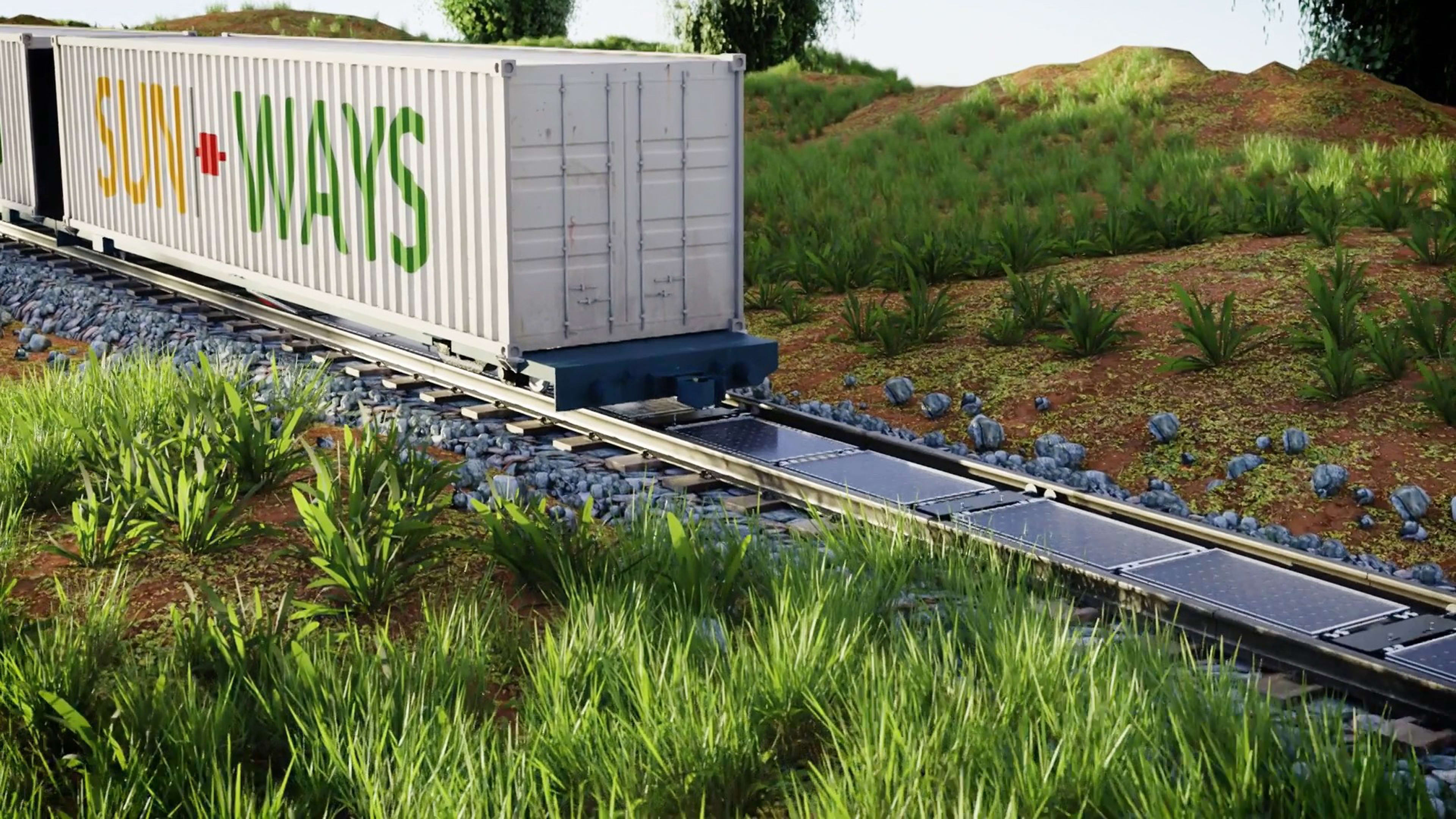Solar power is key to a clean energy future, but many people don’t want large-scale solar farms in their backyard. In the U.S. alone, at least 75 solar farms were rejected last year, in large part because of their size and visual impact on the landscape.
This predicament is the reason why floating solar farms are becoming increasingly popular, why California is covering some of its canals with solar panels, and why South Korea, France, Kenya, and others are elevating solar panels on stilts and growing vegetables underneath.

But soon, countries racing to reach their net-zero goals could have another option to choose from, because a Swiss start-up called Sun-Ways has come up with the idea to slot solar panels in between train tracks. The panels would be installed (and uninstalled for maintenance) by a specially built train that would “unroll” them like a carpet. This would happen during the night, when fewer trains are running.
As wild as it all sound, Sun-Ways actually has two competitors. Greenrail and Bankset Energy, respectively located in Italy and England, are already testing similar concepts. But Sun-Ways stands out in two ways. For one, it uses standard-size panels, whereas the others use smaller panels that are placed on top of crossties. And unlike its competitors, Sun-ways doesn’t require manual installation. It has a train for that!

Sun-ways is putting this idea to the test during a $560,000 pilot project in Western Switzerland. The pilot, which is slated for this summer, will trial a version of the mechanism using a regular train that’s been retrofitted for the occasion. Running on a 140-foot stretch near the city of Neuchâtel, the train will install about 60 solar panels, turning the gap between train tracks into a reflective black ribbon.
Joseph Scuderi, a marketing executive with a background in the energy industry, founded Sun-Ways after he first got the idea while staring down at the tracks while waiting for a train. “It’s unused space,” says Baptiste Danichert, Scuderi’s cofounder.
Bill Nussey, who is the founder of the Freeing Energy Project, whose mission is to accelerate the shift to cleaner, cheaper energy, says that the idea is intriguing and that “there are many ways it can work but [Sun-Ways] will have to overcome a number of big challenges, including debris from trains, the geographic distance between panels and the point of interconnect to the grid.”
For now, 100% of the electricity generated by the solar panels will go straight to the grid to power nearby households. But eventually, the team is planning to use some of that electricity to power the very trains that run above the panels. According to Danichert, 5,000 kilometers of “solar rails” (which is the current length of the entire Swiss railroad network) can generate 1 gigawatt of energy per year, or enough energy to power about 750,000 homes.

Considering there are over 1 million kilometers of railway tracks worldwide, the potential could be huge, even if the system can’t be installed on every one of those tracks. But most importantly, it wouldn’t take up any space from farmland or forests, and it wouldn’t ruin any landscapes.
For the upcoming pilot, the team is using an existing train, but eventually, the team is planning to use a custom train made of two carriages—one will be used to store the solar panels before they get installed, the second will be used to install them. The panels will then remain on the tracks indefinitely, or until any maintenance is required, in which case that same train will go over the tracks and follow the same process, but in reverse. And while it may seem more efficient to repurpose existing train carriages, Danichert notes the custom train will help considerably speed up the process, from 250m per hour to 1km per hour.
For the pilot program, a retrofitted train will install solar panels in groups of three, latching the panels between tracks before stopping and loading up another trio of panels. When Sun-Ways completes its customized train, the company will be able to “unroll” interconnected panels without the train ever needing to stop.
Recognize your brand’s excellence by applying to this year’s Brands That Matter Awards before the early-rate deadline, May 3.
